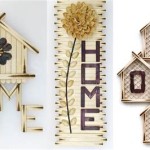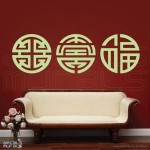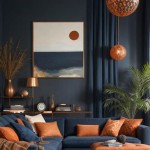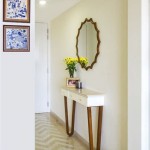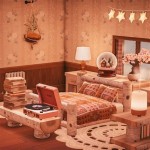1970s Room Decor
The 1970s represent a distinct era in interior design, characterized by bold colors, textured surfaces, and a blend of natural and synthetic materials. Understanding the key elements of 1970s room decor allows for accurate reproduction of the style or incorporation of its unique features into contemporary spaces.
Color palettes of the 1970s embraced earthy tones like avocado green, harvest gold, burnt orange, and rust. These warm hues were often combined with contrasting shades of brown, beige, and cream. Darker colors like chocolate brown and burgundy were also popular, often used for accent walls or furniture.
Wall treatments played a significant role in establishing the 1970s aesthetic. Wood paneling was a ubiquitous feature, often covering entire walls and adding a rustic touch. Textured wallpaper in bold patterns, including geometric shapes, floral designs, and abstract motifs, was another common choice. Some wallpapers even mimicked natural materials like brick or stone.
Flooring in 1970s homes often featured wall-to-wall carpeting in shag or plush textures. These carpets came in a variety of colors, frequently coordinating with the earth-toned color schemes prevalent in the era. Linoleum flooring in geometric patterns was also a popular, more budget-friendly option, especially in kitchens and bathrooms.
Furniture in the 1970s was characterized by bold shapes and contrasting materials. Modular sofas, often upholstered in velvet or corduroy, were a staple. Beanbag chairs and oversized floor cushions provided casual seating options. Materials like chrome, plastic, and acrylic were incorporated into furniture design, adding a futuristic touch. Rattan and wicker furniture brought a natural element into the space, often paired with macrame accents.
Lighting fixtures in the 1970s embraced a variety of styles. Pendant lights with stained glass shades provided a warm, ambient glow. Track lighting offered a more modern option, allowing for adjustable illumination. Table lamps with ceramic bases and fabric shades were also common, often featuring geometric or floral patterns.
Window treatments typically involved heavy drapes in rich fabrics like velvet or corduroy. These drapes often featured bold patterns and colors, echoing the overall design scheme of the room. Macrame wall hangings and woven tapestries were also popular window adornments, adding to the textured and layered aesthetic.
Decorative accessories played a crucial role in completing the 1970s look. Houseplants, particularly ferns and hanging macrame planters, were ubiquitous. Ceramic figurines, often depicting animals or abstract shapes, adorned shelves and tables. Brass and copper accents, such as candlesticks and decorative bowls, added a touch of warmth and shine. Wall art often consisted of posters featuring popular musicians, landscapes, or abstract designs.
The use of natural materials was a significant trend in 1970s decor. Wood, stone, and wicker were incorporated into furniture, wall treatments, and accessories. This emphasis on natural elements brought a sense of warmth and earthiness to the space, contrasting with the synthetic materials also prevalent in the era.
The influence of different cultures was evident in 1970s interior design. Elements of Moroccan and Indian design, such as intricate patterns and rich textiles, were incorporated into furniture, wall hangings, and decorative accessories. This eclectic mix of influences contributed to the unique and layered aesthetic of the decade.
Mirrored surfaces were another defining feature of 1970s decor. Mirrored walls, furniture accents, and decorative objects created an illusion of spaciousness and reflected the vibrant colors and patterns within the room. Disco balls, a symbol of the era's popular music culture, further emphasized the use of reflective surfaces.
The 1970s embraced a “more is more” philosophy. Layering different textures, patterns, and colors was a key element of the style. This layered approach created a sense of visual richness and complexity, reflecting the eclectic and expressive nature of the decade.
Reproducing authentic 1970s decor involves careful consideration of these various elements. Selecting appropriate color palettes, wall and floor treatments, furniture styles, lighting fixtures, and decorative accessories are all crucial steps in capturing the essence of the era. Successfully integrating these elements can create a space that embodies the distinctive style and spirit of the 1970s.
While some individuals may choose to fully embrace the 1970s aesthetic, others may opt to incorporate select elements into a more contemporary design scheme. The versatility of 1970s design allows for a range of interpretations, enabling individuals to personalize their spaces with a touch of retro flair.
Understanding the characteristics of 1970s room decor provides a valuable resource for anyone interested in exploring the design trends of this influential decade. By carefully considering the elements discussed, individuals can effectively recreate the look or incorporate aspects of the style into their own interior design projects.

Worst Home Decor Ideas Of The 1970s Real Estate News Insights Realtor Com

Why Are We Yearning For 70s Decor Again Architectural Digest

70s Living Room Ideas Gorgeous Decor

Smart Commune Photo Vintage Interior Design 70s Home Decor 1970s

70s Living Room Ideas Gorgeous Decor

Worst Home Decor Ideas Of The 1970s Hinman Construction

1975 Ethan Allen Newspaper Insert 70s Home Living Room Decor

The Top Home Decor Trends From 1970s Elle

The Best Decorating Trends From 70s Ideas

The Giki Tiki Retro Living Rooms 1970s Room 70s Home Decor
Related Posts
